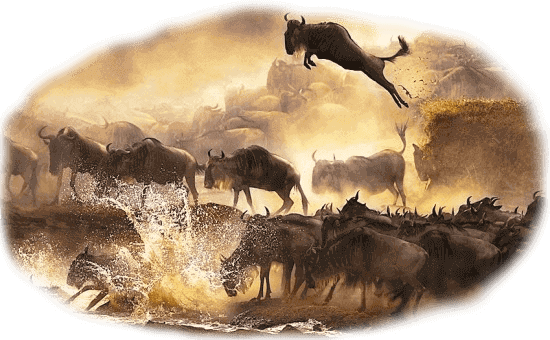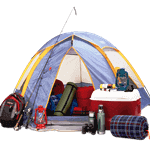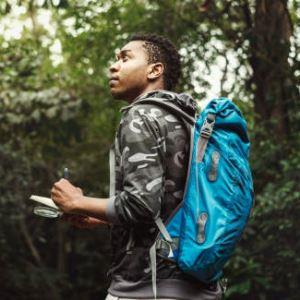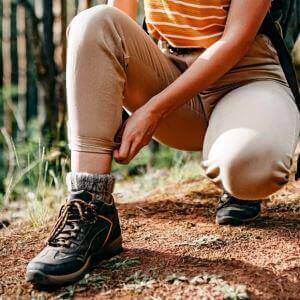 Lake Nakuru in Kenya is one of the most captivating destinations for bird lovers, especially those fascinated by flamingos. For Indian tourists, this location offers an accessible, immersive wildlife experience that balances natural beauty with cultural comfort. The shallow, alkaline waters of Lake Nakuru support a rich growth of algae, attracting thousands of lesser and greater flamingos. The resulting sea of pink feathers lining the lake is a sight few places on Earth can rival. The best time to witness this spectacle is during the dry seasons between January and March or June through October. These months provide optimal light conditions and a high concentration of birds, making them perfect for flamingo photography. With the backdrop of acacia woodlands, rolling hills, and crystal-clear reflections on the water, every photo taken here feels like a painting. For Indian wildlife photography enthusiasts, this is a unique canvas that differs from the dense jungles of India. The open savannahs, elevated viewpoints like Baboon Cliff, and unique flora offer fresh compositions and contrast. Lake Nakuru National Park itself is easily reachable. Flights from India to Nairobi are frequent, and the park is only a three-hour drive from the capital. Tour operators tailor their packages to Indian preferences, including vegetarian meals, cultural considerations, and well-paced itineraries. This attention to detail ensures comfort without compromising the authenticity of the African wilderness experience. The migratory behavior of flamingos means that while the birds are often present year-round, their numbers swell dramatically during peak seasons. This makes timing a trip essential. Beyond flamingos, visitors also encounter white rhinos, giraffes, pelicans, and other bird species creating a more complete safari experience. Preparing for this journey involves more than just packing a camera. Indian travelers are encouraged to bring weather-appropriate clothing in neutral tones, insect repellent, and personal medications. Photography equipment like a 300mm lens, tripod, and filters are also recommended to capture the nuances of light and color around the lake. flamingo safari at Lake Nakuru is more than just wildlife viewing; it is a serene, enriching encounter with nature's artistry. For Indian tourists looking to blend adventure with tranquility, and vibrant visuals with cultural ease, Lake Nakuru offers a rare and memorable journey. Every visit is a reminder of nature’s quiet grandeur, seen in the soft flutter of wings above pink-tinted waters.
Lake Nakuru in Kenya is one of the most captivating destinations for bird lovers, especially those fascinated by flamingos. For Indian tourists, this location offers an accessible, immersive wildlife experience that balances natural beauty with cultural comfort. The shallow, alkaline waters of Lake Nakuru support a rich growth of algae, attracting thousands of lesser and greater flamingos. The resulting sea of pink feathers lining the lake is a sight few places on Earth can rival. The best time to witness this spectacle is during the dry seasons between January and March or June through October. These months provide optimal light conditions and a high concentration of birds, making them perfect for flamingo photography. With the backdrop of acacia woodlands, rolling hills, and crystal-clear reflections on the water, every photo taken here feels like a painting. For Indian wildlife photography enthusiasts, this is a unique canvas that differs from the dense jungles of India. The open savannahs, elevated viewpoints like Baboon Cliff, and unique flora offer fresh compositions and contrast. Lake Nakuru National Park itself is easily reachable. Flights from India to Nairobi are frequent, and the park is only a three-hour drive from the capital. Tour operators tailor their packages to Indian preferences, including vegetarian meals, cultural considerations, and well-paced itineraries. This attention to detail ensures comfort without compromising the authenticity of the African wilderness experience. The migratory behavior of flamingos means that while the birds are often present year-round, their numbers swell dramatically during peak seasons. This makes timing a trip essential. Beyond flamingos, visitors also encounter white rhinos, giraffes, pelicans, and other bird species creating a more complete safari experience. Preparing for this journey involves more than just packing a camera. Indian travelers are encouraged to bring weather-appropriate clothing in neutral tones, insect repellent, and personal medications. Photography equipment like a 300mm lens, tripod, and filters are also recommended to capture the nuances of light and color around the lake. flamingo safari at Lake Nakuru is more than just wildlife viewing; it is a serene, enriching encounter with nature's artistry. For Indian tourists looking to blend adventure with tranquility, and vibrant visuals with cultural ease, Lake Nakuru offers a rare and memorable journey. Every visit is a reminder of nature’s quiet grandeur, seen in the soft flutter of wings above pink-tinted waters.
Flamingo Safari Essentials for Indian Tourists
| Category | Details |
|---|---|
| Best Time to Visit | January–March; June–October |
| Types of Flamingos | Lesser Flamingos (bright pink), Greater Flamingos (pale pink) |
| Ideal Photo Gear | DSLR or mirrorless, 300mm+ lens, tripod, CPL filter |
| Closest Access City | Nakuru (30-minute drive); Nairobi (3-hour drive) |
| Health Tips | Yellow fever vaccination (recommended), mosquito repellent |
| Food Preferences | Vegetarian meals available at select lodges; carry packed Indian snacks |
| Photography Hotspots | Baboon Cliff, Southern Shoreline, Out of Africa, Lion Hill Ridge |
| Safari Clothing Suggestions | Earth tones, layers for temperature variation, water-resistant shoes |
Best Time to Visit Lake Nakuru for Flamingo Photography
Timing is crucial when planning a flamingo safari to Lake Nakuru. The lake's bird population and scenic conditions fluctuate significantly throughout the year, and understanding these cycles helps travelers maximize both sightings and photographic potential. For Indian tourists, planning around school holidays, weather considerations, and cultural festivals also plays a role. Here’s an in-depth look at the ideal times to visit Kenya for a safari:
- Dry Season (June to October): The dry season is the most favorable time to visit Lake Nakuru for both wildlife viewing and photography. The skies remain mostly clear, which allows for optimal natural lighting, especially during early morning and late afternoon golden hours. Roads within the park are more accessible and less prone to flooding or erosion, making travel smoother. Flamingos tend to gather in dense numbers along the exposed lake shorelines, where the receding water leaves thick algae deposits their primary food source. Photographers can capture dramatic scenes without weather disruptions, and families enjoy a more predictable experience in terms of climate and logistics.
- Short Rains (November to December): This transitional season offers a quieter safari experience, with fewer tourists and lush, reawakening landscapes. The rainfall is usually light and short-lived, mostly occurring in the late afternoons or at night. This season is particularly appealing for travelers seeking a peaceful encounter with nature. The overcast skies and filtered sunlight during this time often result in golden lighting that flatters the subtle pink tones of flamingos. The birdlife remains active, and visibility is typically still good around the lake’s key photographic spots.
- Migration Peak (January to March): These months mark the peak of flamingo migration to Lake Nakuru. During this period, thousands of flamingos converge along the lake's shore, forming thick pink blankets that stretch for miles. For wildlife photographers, this is an unmatched opportunity to capture movement, group dynamics, and dense, colorful compositions. The hot, dry conditions also enhance contrast and sharpness in images. For Indian tourists, this season aligns well with winter vacations and mild Kenyan weather. It’s an excellent time to combine a photographic safari with cultural visits or extended stays in the Great Rift Valley.
Why Lake Nakuru National Park Is a Flamingo Haven
Lake Nakuru National Park has earned its global reputation as a sanctuary for flamingos because of its unique ecological conditions. The lake’s alkaline waters support a rich concentration of blue-green algae, the primary food source for flamingos. These conditions attract both lesser and greater flamingos, which often arrive in tens of thousands, creating a spectacular pink shoreline that shifts and shimmers with movement. What makes Lake Nakuru particularly reliable for flamingo spotting is its consistent algae bloom. Unlike other Rift Valley lakes that experience sharp fluctuations in salinity and water levels, Nakuru's basin geography and inflow dynamics offer more stable conditions. This supports a steady population of flamingos almost year-round. The park’s management has also taken significant conservation measures to maintain the lake’s health by regulating inflows and protecting surrounding catchments. Lesser flamingos, which are smaller and exhibit a vibrant pink hue, dominate the lake’s avian population. They feed primarily on spirulina algae, which thrives in the lake’s high pH. Greater flamingos, which are taller and paler, are also present and feed on crustaceans and small invertebrates. This cohabitation makes Lake Nakuru one of the few places in the world where both species can be observed together in such high numbers. Indian tourists will find this haven especially rewarding not just for the visual spectacle, but also for the ease of access and park infrastructure. Observation points like Baboon Cliff and the Southern Shoreline offer wide viewing areas ideal for photography. The park is also malaria-free and has minimal travel hurdles, which adds to the peace of mind for families and solo travelers alike. Beyond flamingos, the lake is home to over 450 bird species, including pelicans, African fish eagles, and herons, enriching the birdwatching experience. The park hosts a variety of mammals such as white rhinos, waterbucks, and Rothschild giraffes, which share the habitat harmoniously with the birdlife. This biodiverse environment ensures that even outside peak flamingo seasons, the park remains a rewarding destination. Lake Nakuru National Park isn’t just a stop on a Kenyan safari itinerary it’s a destination in its own right. Its tranquil beauty, biological richness, and cultural accessibility make it an exceptional choice for Indian travelers looking for a distinctive wildlife encounter. Whether you're an avid birder, photographer, or a family seeking a peaceful yet engaging holiday, Lake Nakuru delivers on every front with quiet confidence.
Where to Spot Flamingos at Lake Nakuru National Park
Knowing where to look is key to experiencing the full beauty of flamingos at Lake Nakuru. While the entire lake can offer sightings depending on the season and water levels, there are specific spots that consistently provide exceptional views and photographic opportunities. These areas combine accessibility, scenic backgrounds, and high bird concentrations, making them ideal for both amateur and seasoned wildlife photographers. Below is a deeper look into the prime locations within the park where flamingo sightings are most rewarding:
- Southern Shoreline: Situated closest to the Nderit Gate, the southern shoreline is often the first stop for bird watchers and photographers. This area offers broad viewing arcs and shallow water zones where flamingos tend to feed in large flocks. Because the water is more exposed here during the dry seasons, the algae concentration attracts high numbers of birds. The proximity to the shoreline also allows for closer, more detailed photography of flamingo behavior, including feeding, preening, and synchronized movement.
- Baboon Cliff Viewpoint: One of the highest accessible points within the park, Baboon Cliff provides sweeping panoramic views of the lake and its surroundings. While it may not offer close-up encounters with flamingos, it excels in framing large-scale compositions that show the full scope of the flamingo flocks against the shimmering lake. Sunrise and sunset shots taken from here can be especially striking, as the light bathes the landscape in soft golden hues, enhancing the natural color of the birds.
- Makalia Falls and River Mouth: Located near the southern end of the park, this area is a lesser-known but rewarding spot for flamingo watchers. The contrast of flowing freshwater and alkaline lake creates a varied habitat that appeals to both lesser and greater flamingos. Additionally, the diversity in terrain from rocky outcrops to lush greenery adds dimension to wildlife photography. Visitors here often enjoy a more tranquil experience, away from busier viewing points, making it ideal for reflective nature observation and capturing unique angles.
Photography Tips for Capturing Flamingos in Lake Nakuru
Photographing flamingos at Lake Nakuru is a rewarding yet demanding experience that requires thoughtful preparation and an eye for detail. For Indian tourists seeking to capture these elegant birds in their natural habitat, understanding the local environment and its photographic dynamics is crucial. The first step to successful flamingo photography is to arrive early. Morning light is soft and golden, casting long shadows and enhancing the pink hues of the flamingos’ plumage. During this time, birds are often most active, feeding and interacting in the shallows. Positioning yourself with the sun at your back will help illuminate the birds and reduce silhouette effects. This is especially important when photographing large flocks in motion or capturing reflections on the calm lake water. Using the right equipment can make all the difference. A DSLR or mirrorless camera with a telephoto lens preferably 300mm or more is recommended for shooting from a respectful distance without disturbing the wildlife. A sturdy tripod is essential for stability during long sessions, especially when using slower shutter speeds in low light conditions. For those interested in action shots, setting a high shutter speed helps freeze flight patterns or moments of synchronized movement. Composition plays a vital role in storytelling. Try different angles get low for intimacy, or shoot from elevated viewpoints like Baboon Cliff for wide, sweeping perspectives. Capture the contrast between the birds and their environment: the pink bodies against the grey-blue lake, framed by green acacias or the dramatic Rift Valley escarpment. Including a few non-flamingo elements like pelicans, zebras, or reflections adds visual interest and a sense of place. Weather can change quickly around Lake Nakuru, so be prepared. Cloud cover often results in softer, diffused light, ideal for reducing glare and enhancing feather texture. Rain gear for your camera, lens hoods to reduce flare, and lens wipes are all essentials to carry in your kit. The best wildlife photographs are born from moments of stillness and observation. Watch the flock’s rhythm, wait for symmetry or interaction, and take your time framing each shot. Respect for the birds and their space is paramount not just for conservation, but also to keep the experience peaceful and undisturbed. For Indian photographers used to forest terrains and low-light jungle conditions, the open landscape of Lake Nakuru offers a refreshing challenge. With the right preparation and timing, this location promises breathtaking visuals that tell vivid stories of Kenya’s wild, feathered symphony.
What to Pack for a Flamingo Safari at Lake Nakuru
Packing right for a flamingo safari at Lake Nakuru can significantly enhance your overall experience. Given the diversity in climate, terrain, and activities, preparation should balance practicality with personal comfort. Indian tourists will find that a mix of safari essentials and culturally familiar items ensures a seamless and enjoyable journey.
- Photography Gear: A flamingo safari is incomplete without quality photography equipment. A telephoto lens is essential for capturing flamingos at a distance without disturbing them. A wide-angle lens can help when photographing the vast landscapes and flocks in motion. ND filters are useful in managing light, especially during bright daytime hours, while UV protection filters safeguard your lens from dust and glare. Rain covers protect your gear during sudden showers a common occurrence in equatorial regions.
- Clothing: Comfort and adaptability are key when it comes to clothing. Light cotton fabrics are ideal for daytime, keeping you cool under the sun. Neutral earth tones help you blend into the environment and avoid startling wildlife. Early mornings in the park can be chilly, so pack a fleece or a light jacket. A wide-brimmed safari hat and UV sunglasses are must-haves for sun protection. Choose sturdy, water-resistant shoes suited for uneven paths and damp grounds.
- Essentials: In addition to photography and clothing, there are practical items you shouldn't overlook. Binoculars are perfect for observing birds in detail without the need to get too close. Power banks are crucial for keeping cameras and phones charged, especially during long game drives. A quick-dry towel, mosquito repellent, and personal medications ensure hygiene, health, and comfort while on the move.
- Cultural Comforts for Indian Tourists: Catering to dietary and personal preferences makes travel smoother. Pack ready-to-eat vegetarian meals, instant snacks, or meal kits familiar to your palate. Herbal teas, Indian spices, or condiments can offer a touch of home during extended stays. Many safari tour lodges around Lake Nakuru are accustomed to Indian guests and can accommodate vegetarian or Jain meals upon request.
Being prepared with the right gear and items can elevate your safari from good to unforgettable. From the quiet thrill of a flock taking flight to the golden light framing a flamingo’s silhouette, the right equipment and clothing ensure you’re ready to embrace it all with ease.
Flamingo Migration Seasons at Lake Nakuru: What to Expect
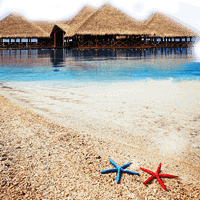 Lake Nakuru is one of the most consistent sites in East Africa for observing flamingo migrations. While the birds can be seen throughout the year, their presence fluctuates based on rainfall, food supply, and water chemistry. These variations influence the density, behavior, and composition of the flamingo flocks, making it essential for visitors especially photographers and birding enthusiasts from India to understand the seasonal patterns before planning their safari. During the months of January to March, Lake Nakuru witnesses one of its largest flamingo congregations. This period is considered the migration peak when both lesser flamingos, with their deep pink plumage, and greater flamingos, recognized for their larger size and lighter coloration, arrive in massive numbers. The drier conditions during this time reduce water levels, creating ideal alkaline environments where algae flamingos' primary food thrives. The dense, colorful gatherings of these birds form a captivating visual that draws photographers and birdwatchers from across the globe. The June to October window also experiences another wave of increased flamingo presence. This season coincides with Kenya's long dry spell, which again contributes to lower water levels and greater algae concentration. With fewer rains to dilute the lake’s salinity, the habitat remains favorable for algae blooms, keeping the flamingo populations abundant. For Indian travelers seeking a summer or post-monsoon adventure, this period offers good birdwatching opportunities, cooler temperatures, and clearer skies for photography. Outside these peak times, flamingo numbers may recede as some flocks shift to other Rift Valley lakes like Bogoria or Elmenteita. These movements are primarily driven by changes in lake chemistry or food availability. However, Lake Nakuru still retains a smaller resident population, ensuring that visitors almost always see some flamingos, even during off-peak months. What makes Lake Nakuru a favored migration stopover is its consistency and accessibility. Unlike many remote birding destinations, Nakuru’s infrastructure, protected status, and year-round ecological balance help maintain a welcoming environment for migratory birds. For Indian tourists, combining a visit with nearby attractions or timing travel around major holidays can make the experience both logistically smooth and culturally enriching. Whether witnessing the explosive burst of pink feathers during the peak months or observing smaller, serene flocks during quieter times, every season at Lake Nakuru tells a different chapter of the flamingo migration story. Understanding these rhythms can help travelers arrive at just the right moment to see nature’s performance at its most elegant and expressive.
Lake Nakuru is one of the most consistent sites in East Africa for observing flamingo migrations. While the birds can be seen throughout the year, their presence fluctuates based on rainfall, food supply, and water chemistry. These variations influence the density, behavior, and composition of the flamingo flocks, making it essential for visitors especially photographers and birding enthusiasts from India to understand the seasonal patterns before planning their safari. During the months of January to March, Lake Nakuru witnesses one of its largest flamingo congregations. This period is considered the migration peak when both lesser flamingos, with their deep pink plumage, and greater flamingos, recognized for their larger size and lighter coloration, arrive in massive numbers. The drier conditions during this time reduce water levels, creating ideal alkaline environments where algae flamingos' primary food thrives. The dense, colorful gatherings of these birds form a captivating visual that draws photographers and birdwatchers from across the globe. The June to October window also experiences another wave of increased flamingo presence. This season coincides with Kenya's long dry spell, which again contributes to lower water levels and greater algae concentration. With fewer rains to dilute the lake’s salinity, the habitat remains favorable for algae blooms, keeping the flamingo populations abundant. For Indian travelers seeking a summer or post-monsoon adventure, this period offers good birdwatching opportunities, cooler temperatures, and clearer skies for photography. Outside these peak times, flamingo numbers may recede as some flocks shift to other Rift Valley lakes like Bogoria or Elmenteita. These movements are primarily driven by changes in lake chemistry or food availability. However, Lake Nakuru still retains a smaller resident population, ensuring that visitors almost always see some flamingos, even during off-peak months. What makes Lake Nakuru a favored migration stopover is its consistency and accessibility. Unlike many remote birding destinations, Nakuru’s infrastructure, protected status, and year-round ecological balance help maintain a welcoming environment for migratory birds. For Indian tourists, combining a visit with nearby attractions or timing travel around major holidays can make the experience both logistically smooth and culturally enriching. Whether witnessing the explosive burst of pink feathers during the peak months or observing smaller, serene flocks during quieter times, every season at Lake Nakuru tells a different chapter of the flamingo migration story. Understanding these rhythms can help travelers arrive at just the right moment to see nature’s performance at its most elegant and expressive.
Top Photo Spots Around Lake Nakuru for Bird Lovers
Lake Nakuru National Park is not only home to vast flocks of flamingos, but also a diverse landscape that offers stunning backdrops and unique photographic opportunities for bird lovers. Indian travelers with an interest in wildlife photography or nature exploration will find several spots around the lake that perfectly combine accessibility, light conditions, and biodiversity. Knowing where to go makes all the difference in capturing moments that tell authentic and memorable stories through the lens.
- Out of Africa Lookout: This elevated viewpoint offers sweeping vistas of the southern stretches of Lake Nakuru. It is a favorite among photographers who want to capture large flocks of birds from above. Early mornings at this spot are particularly magical, with the golden sunrise casting long shadows and turning the water surface into a mirror that reflects both sky and birdlife. This location also allows for broader landscape shots that show the scale and setting of flamingo activity in context with the surrounding terrain.
- Lion Hill Ridge: Positioned near forested areas and water bodies, Lion Hill Ridge is ideal for combining avian subjects with wildlife like antelopes or even big game. The contrasting textures of forest canopy and shimmering lake water create dramatic frames for photographers aiming to showcase Lake Nakuru’s biodiversity. The ridge also provides a slightly shaded environment, which can be helpful for longer shooting sessions during hot afternoons.
- Euphorbia Forest Zones: These unique cactus-like tree formations add a dramatic and textural foreground to flamingo photographs. When flocks fly overhead or settle near these groves, the juxtaposition of spiny green foliage and soft pink plumage offers captivating visual contrasts. For bird lovers looking for creative, less conventional shots, this area provides numerous angles and layered compositions that reflect both wildlife behavior and ecological richness.
Each of these photo spots at Lake Nakuru offers distinct advantages depending on the time of day, lighting, and what kind of shot you’re aiming for. For Indian tourists, combining visits to multiple vantage points during a single safari enhances the photographic narrative and personal experience alike.
